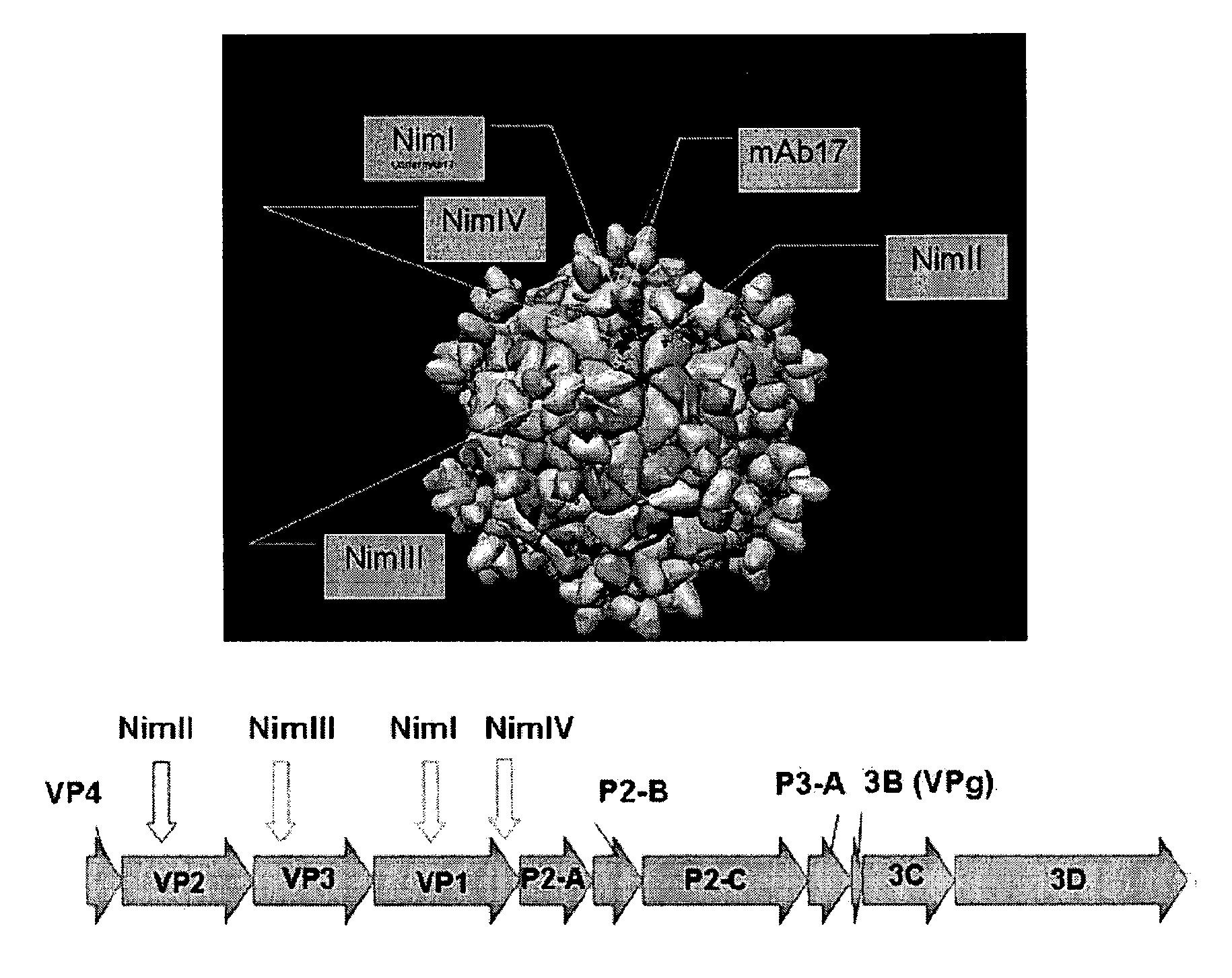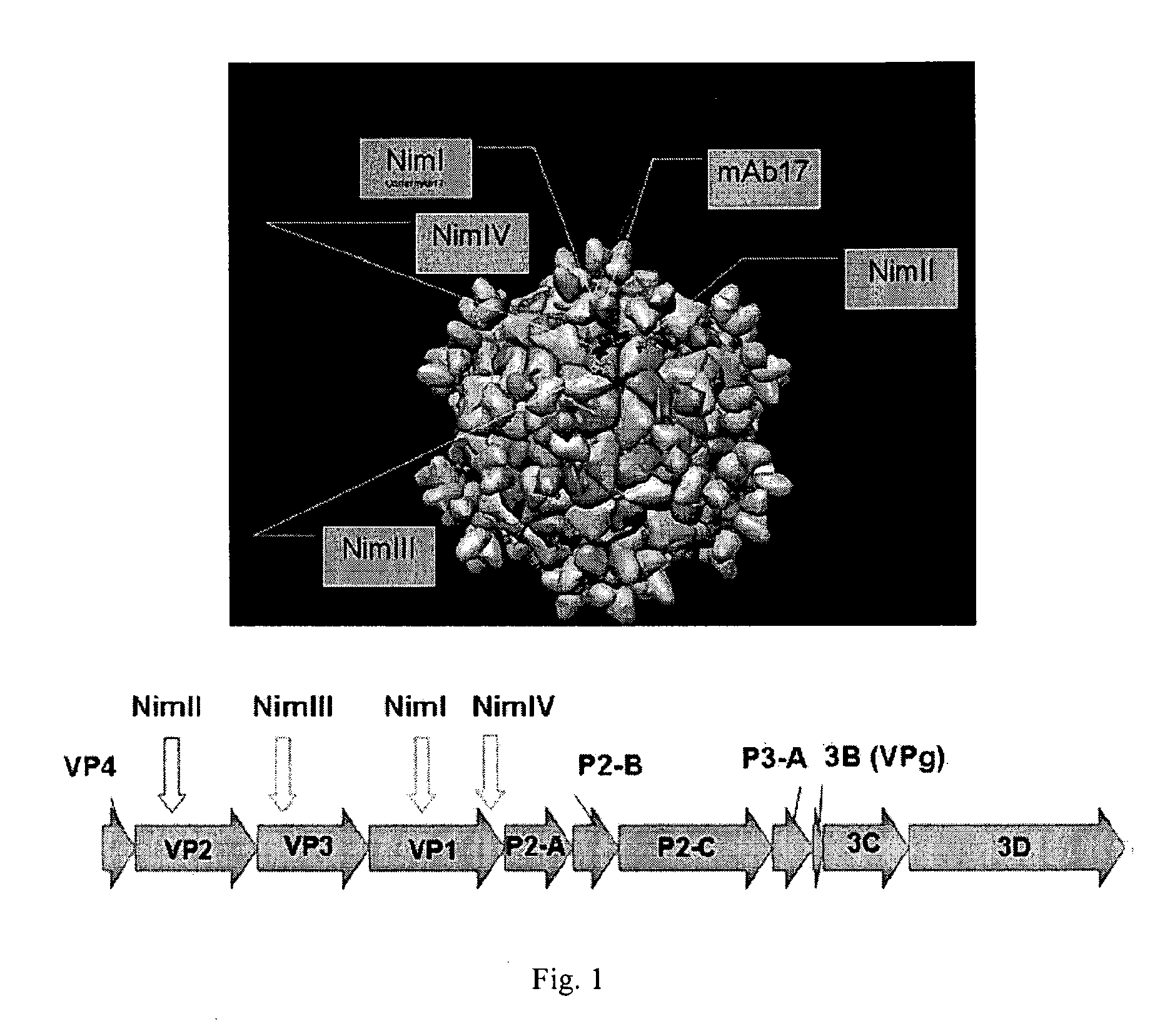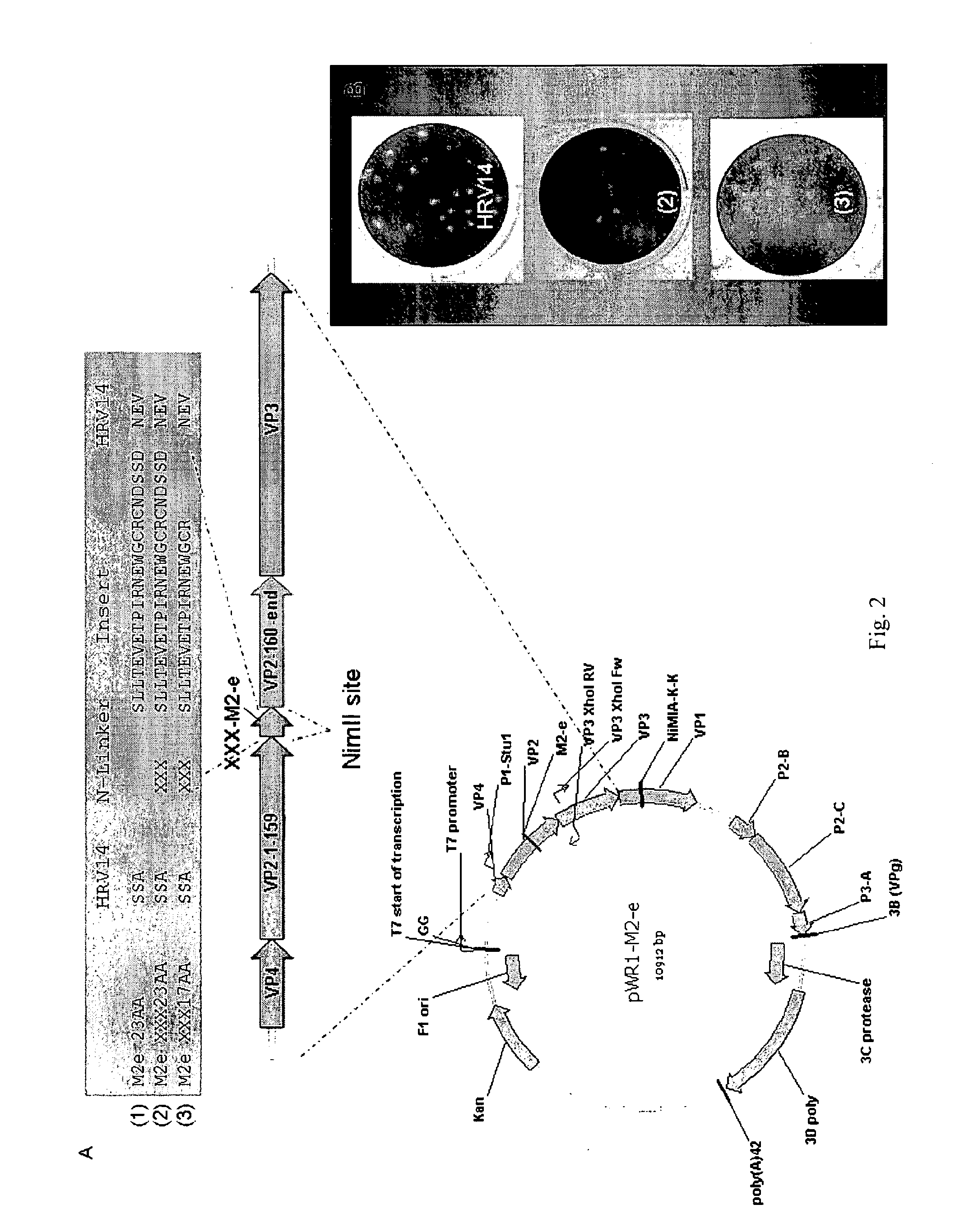Recombinant Rhinovirus Vectors
a technology of recombinant rhinovirus and vector, which is applied in the field of recombinant rhinovirus vector, can solve the problems of inability to elicit very strong and long-lasting antibody responses, inability to elicit more doses, and inability to elicit a large number of antibody responses
- Summary
- Abstract
- Description
- Claims
- Application Information
AI Technical Summary
Benefits of technology
Problems solved by technology
Method used
Image
Examples
experimental examples
I. Construction of HRV14-NimII-M2e Chimeras
[0078]We have constructed HRV14 NimII-M2e recombinant viruses. The viruses have been shown to express M2e on the virion surface, as demonstrated by the ability of anti-M2e monoclonal antibodies to neutralize the infectivity of the recombinant viruses.
[0079]Three types of HRV14-M2e constructs were created (FIG. 2A).
[0080]1. HRV14-NimII-23AA, carrying 23 amino acids of M2e inserted between amino acids 159 and 160 of VP2 (NimII site);
[0081]2. HRV14-NimII-XXX23AA library. This set of constructs (plasmid library) was similar to the first construct, except for the presence of a 3-amino acid randomized N-terminal linker fused to the peptide. This randomized linker was generated by the M2e sequence using a 5′ (direct) primer containing 9 randomized nucleotides coding for the linker amino acids; and 3. HRV14-NimII-XXX17AA library. This library was generated the same way as the first, but contained a shortened M2e peptide containing only the first 17...
PUM
| Property | Measurement | Unit |
|---|---|---|
| concentration | aaaaa | aaaaa |
| volume | aaaaa | aaaaa |
| volume | aaaaa | aaaaa |
Abstract
Description
Claims
Application Information
 Login to View More
Login to View More - R&D
- Intellectual Property
- Life Sciences
- Materials
- Tech Scout
- Unparalleled Data Quality
- Higher Quality Content
- 60% Fewer Hallucinations
Browse by: Latest US Patents, China's latest patents, Technical Efficacy Thesaurus, Application Domain, Technology Topic, Popular Technical Reports.
© 2025 PatSnap. All rights reserved.Legal|Privacy policy|Modern Slavery Act Transparency Statement|Sitemap|About US| Contact US: help@patsnap.com



